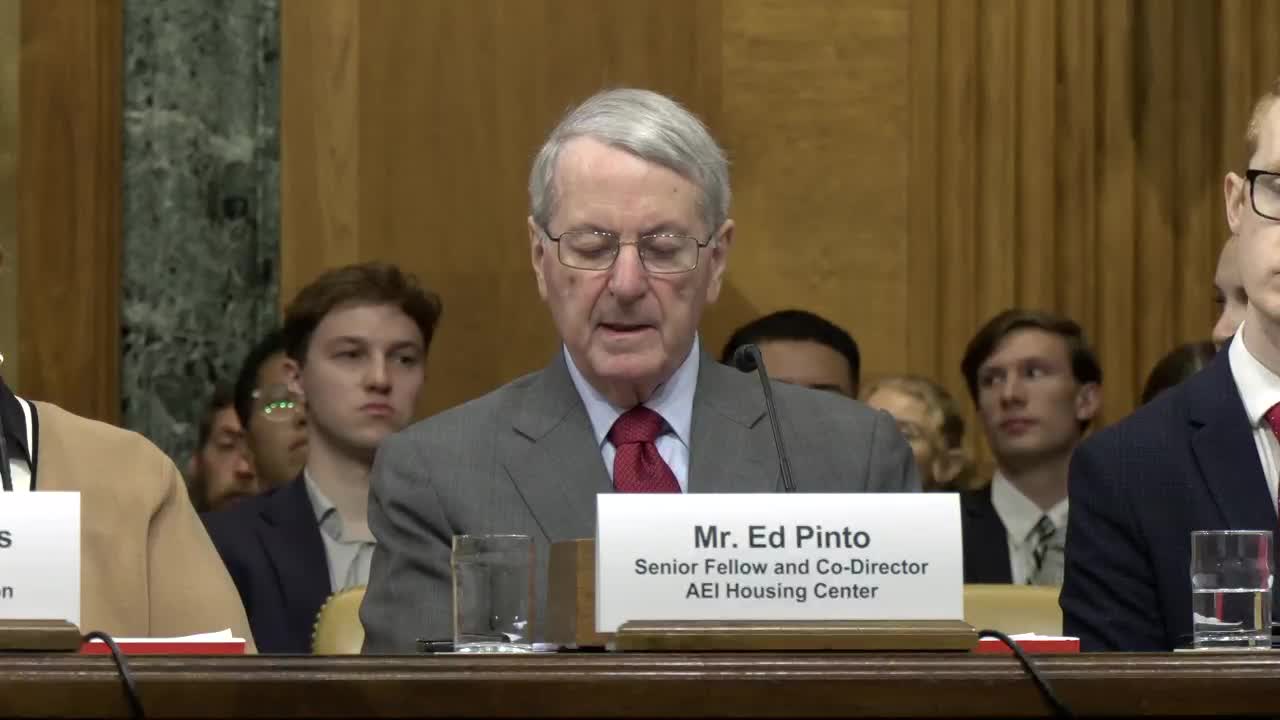Housing Crisis Deepens as Debt and Inflation Soar
September 25, 2024 | Budget: Senate Committee, Standing Committees - House & Senate, Congressional Hearings Compilation
This article was created by AI summarizing key points discussed. AI makes mistakes, so for full details and context, please refer to the video of the full meeting. Please report any errors so we can fix them. Report an error »

During a recent government meeting, key discussions centered on the pressing issue of housing affordability and the implications of rising public debt on economic growth.
Jack Salmon, Director of Policy Research at the Philanthropy Roundtable, emphasized the detrimental effects of increasing government spending on housing initiatives, arguing that such measures could exacerbate the affordability crisis. He pointed out that proposals like the Harris campaign's $25,000 down payment assistance for first-time homebuyers could lead to an additional $224 billion in deficit spending, further straining the nation's fiscal health. Salmon highlighted the current public debt, which exceeds $35 trillion, warning that if economic growth slows or interest rates rise, the debt could reach 217% of GDP in the next 30 years. He noted that high inflation, which has surged by 20% since early 2021, disproportionately affects low-income households, making the need for effective solutions more urgent.
In response to the housing crisis, Senator Patty Murray from Washington State called for a collaborative approach to increase affordable housing supply. She noted a significant shortage in her state, with only three affordable homes available for every ten extremely low-income families. Murray highlighted the Pathways to Removing Obstacles to Housing program, which aims to eliminate zoning barriers and has received $100 million in funding for fiscal year 2024.
Experts at the meeting acknowledged the effectiveness of the Low-Income Housing Tax Credit program in producing new affordable housing units. However, they also pointed out the challenges posed by the lengthy financing processes, which can delay the delivery of housing solutions amid high demand.
The meeting underscored the need for a multifaceted strategy to tackle the housing crisis, balancing fiscal responsibility with the urgent requirement for more affordable housing options. As discussions continue, the focus remains on innovative solutions that address both the immediate needs of families and the long-term economic implications of public debt.
Jack Salmon, Director of Policy Research at the Philanthropy Roundtable, emphasized the detrimental effects of increasing government spending on housing initiatives, arguing that such measures could exacerbate the affordability crisis. He pointed out that proposals like the Harris campaign's $25,000 down payment assistance for first-time homebuyers could lead to an additional $224 billion in deficit spending, further straining the nation's fiscal health. Salmon highlighted the current public debt, which exceeds $35 trillion, warning that if economic growth slows or interest rates rise, the debt could reach 217% of GDP in the next 30 years. He noted that high inflation, which has surged by 20% since early 2021, disproportionately affects low-income households, making the need for effective solutions more urgent.
In response to the housing crisis, Senator Patty Murray from Washington State called for a collaborative approach to increase affordable housing supply. She noted a significant shortage in her state, with only three affordable homes available for every ten extremely low-income families. Murray highlighted the Pathways to Removing Obstacles to Housing program, which aims to eliminate zoning barriers and has received $100 million in funding for fiscal year 2024.
Experts at the meeting acknowledged the effectiveness of the Low-Income Housing Tax Credit program in producing new affordable housing units. However, they also pointed out the challenges posed by the lengthy financing processes, which can delay the delivery of housing solutions amid high demand.
The meeting underscored the need for a multifaceted strategy to tackle the housing crisis, balancing fiscal responsibility with the urgent requirement for more affordable housing options. As discussions continue, the focus remains on innovative solutions that address both the immediate needs of families and the long-term economic implications of public debt.
View full meeting
This article is based on a recent meeting—watch the full video and explore the complete transcript for deeper insights into the discussion.
View full meeting